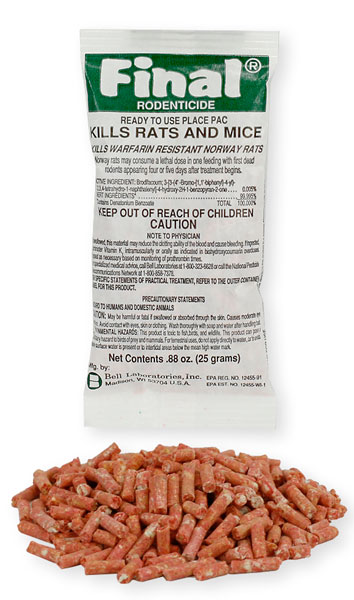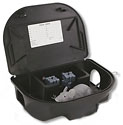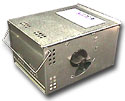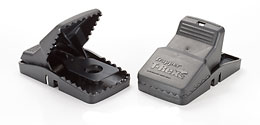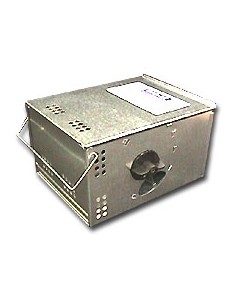Rodenticide Mitigation Decision Summary
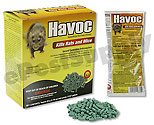
Havoc Rodenticide Pellets Will Not Be Available In Retail Stores After June 4, 2011
The EPA Rodenticide Mitigaton Decision affects all pellets, grains, meals and containers of rat and mouse bait under 16 lbs. Only registered farmers, ranchers and pest control professionals can purchase quantities over 1 lb. Homeowners are required to purchase "blocks" and not pellets or grains and only in quantities under 1 lb, and only in a concealed child resistant bait station.
Recommended Trap Products:
Recommended Bait Station Products:
In June of 2008, the United States Environmental Protection Agency (EPA) passed rules and regulations affecting the sale and use of 10 well known rodenticide (rat bait) chemistrys and formula's. Most of these formula's are known as Generation 1, Generation 2 and Generation 3 Rodenticides. None of these chemistry's has posed any significant risk to none target organisms such as children, pets, wildlife etc. when used properly. Yet the EPA decided to go beyond the scope of what is necessary to protect our children, pets and wildlife and create new burdonsome regulations for homeowners, ranchers, farmers and pest control management professionals. In some experts opinions, this is a step towards elimination of rodenticides altogether, and is more in line with what PETA (People For Protection and Ethical Treatment of Animals) wants regulators to do. Is this some manipulation of the laws and regulations to satisfy an independent group of sometimes radical people who's thoughts on animal treatment sometimes border on religious and sacred views? Or is this an attempt to begin the outright ban of rodenticides altogether?
Whatever your view on this subject, you have to remember that rodenticide poisoning in the USA is extremely low according to the Centers for Poison Control (CDC) and elimination of rodents in this country have contributed significantly to less disease and a longer expected human lifespan. The economic impact of rodents in countries such as India accounts for as much as 1/3 of their food supply being contaminated every year by rodents.
This Rodenticide Mitigation Decision by the EPA will surely have an adverse reaction, because Pest Control Professionals, University Scholars and common sense will tell you that trapping and trying to exclude rats and mice from buildings and reducing the use of rodenticides overall will create a "SUPER" population that we may not be able to overcome.
EPA Rodenticide Mitigation Decision Summary - 2008
Purpose:
1. Decrease children’s exposure to rodenticides as measured by reduced calls to the poison control
center.
2. Reduce risk of primary and secondary poisonings to non-target wildlife. Covers ten actives
Second-Generation Anticoagulants
First-Generation Anticoagulants and Non-Anticoagulants
EPA’s Approach To Rodenticide Mitigation Decision
Provide various requirements by market segment; Consumer, Agricultural, and Professional, to accomplish stated goals of protecting
children and wildlife.
Consumer Retail Rodenticide Sales Restrictions
Stores in this market defined as hardware, home improvement, grocery, convenience, drug, club and big box.
- Packages to be one pound or less.
- Second generation products not allowed i.e. bromadiolone, brodifacoum, difethialone.
- Products permitted are diphacinone, bromethalin, chlorophacinone, warfarin, zinc phosphide and
cholecalciferol.
- Bait must be sold with a ready to use bait station (one-time use or refillable).
- Bait must be sold in a block (or other like solid form)/Pellets and meal not allowed.
- Below ground uses (moles/gophers) do not have a bait station requirement and pellets and meal
are allowed.
Agricultural Rodenticide Use And Sale Restrictions
Stores defined as those oriented towards agricultural consumers including farmers and ranchers.
- Second generation products (brodifacoum, bromadiolone, difethiolone) will not be “Restricted Use” but can only be sold in package sizes
of 8 lb. or greater (2 x 4lb. contained package acceptable but pails can not be smaller than 4 lb.)
and are not allowed to be used inside homes or residences.
- Diphacinone, bromethalin, chlorophacinone, warfarin and zinc phophide can only be sold in
package sizes of 4 lb. or greater.
- All bait forms are acceptable.
- Bait stations are required for outdoor above ground use of rodenticides and indoors if there is
exposure to children, pets, or non-target animals.
- Specific labels required for agricultural uses.
- Empty bait stations allowed to be sold separately.
Professional Pest Management Rodenticide Use Restrictions
First-Generation Anticoagulant and Non-Anticoagulant Products for Agricultural
Use and Professional Applicators (Pest Control Operators)
The following restrictions apply to first-generation anticoagulants or non-anticoagulant rodenticide products intended for agricultural use or for use by professional applicators (pest control operators).
-
Bait need not be sold in or with bait stations, but labels must require use of
bait stations where children, domesticated animals, or non-target wildlife
may be exposed (this is not a new requirement).
- Products may contain the following active ingredients: warfarin, diphacinone, chlorophacinone, zinc phosphide, bromethalin, and
cholecalciferol.
- Products may not contain the following active ingredients: brodifacoum, difethialone, bromadiolone, or difenacoum.
- Any form of bait is acceptable, including meal, pelleted, or block forms,
but labels of meal, treated whole-grain or pelleted forms of bait must
prohibit use where children, domesticated animals, or non-target
wildlife may be exposed.
- Products must contain at least 4 pounds of bait.
Second-Generation Anticoagulant Products for Professional Applicators (Pest
Control Operators)
The following restrictions apply to rodenticide products intended for the professional market (commercial pest management professionals (PMP's),
public health officials, Federal, State, or municipal employees charged with rodent control, etc.) other than field use and containing any of the
second-generation anticoagulants (brodifacoum, difethialone, bromadiolone, and difenacoum).
-
Bait need not be sold in bait stations, but labels must require use of bait stations for indoor applications where children,
domesticated animals, or
non-target wildlife may be exposed (this is not a new requirement).
- Product labels must require the use of bait stations for all outdoor, above-
ground placements.
- Product labels must state “Do not apply further than 50 feet from
buildings".
- Bait stations used in residential and institutional settings
must meet the standards set forth in Section V.C, below, for ability to
isolate bait from children.
- Any form of bait except liquid is acceptable, including meal, pelleted,
block, and paste forms, but labels of meal, treated whole-grain, or pelleted
forms of bait must prohibit use where children, domesticated animals, or
non-target wildlife may be exposed.
- Products must contain at least 16 pounds of bait.
Registrants must agree to terms and conditions of registration specifying that the registrants will control distribution of the products so that they
only be distributed toor sold in agricultural, fam and tractor stores or directly to PCOs and other professional applicators, and that registrants will
not sell or distribute the product in channels of trade likely to result in retail sale in hardware and home improvement stores, grocery stores,
convenience stores, drug stores, club stores, big box stores, and otheir general retailers.
Last Day for “Release for Shipment” of Product Not Complying with Risk Mitigation Decision
(Deadline: June 4, 2011; 3 years from issuance of decision)
